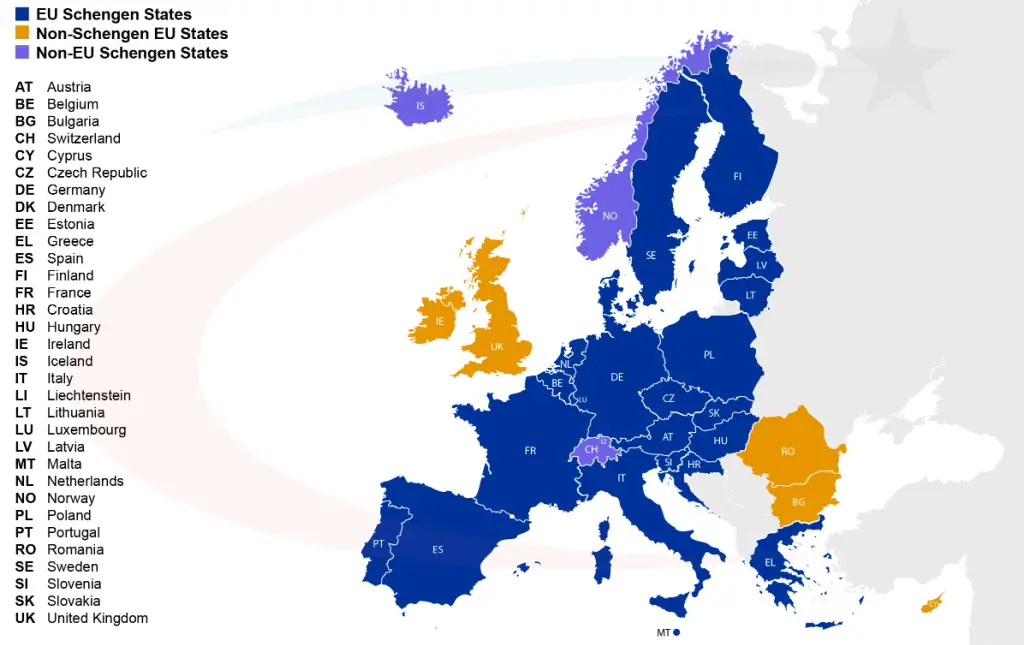On our blog, you may have noticed a big red ? in the space where we usually announce where we are off to next. This is because Europe just threw a big ole monkey wrench into our plans since learning of the Schengen area, or as we dubbed it…”the Schlitterbahn,” since we weren’t exactly sure how to pronounce it (back then…shane-gen)!
After following so many backpackers and fellow round-the-world travelers, we don’t know how we missed this critical piece of travel information. Hence, the importance of writing this post is to share our findings with other long-term travelers and backpackers.
Schengen Area Overview
The Schengen area makes it very difficult for Americans (or any other non-Schengen citizens) to explore almost the entire continent of Europe on a more long-term basis. Travelers are only allowed 90 days within Schengen member countries in any 180 days. Your 90 days cumulate but do not need to be consecutive.
For example, we arrived in Lisbon on June 23 so we have until December 20, to use 90 days of travel. Then, 180 days after our initial arrival date, (which would be December 21) we are granted another 90 days to travel within the Schengen Area countries.
Our Original Plans
Our original plan was to float around Europe with the hope of arriving in Prague just in time to spend the Christmas holiday. As long as we were crossing borders into different countries, we figured there would be no concern with visas or length of travel time.
But just as the Euro unifies this region, so does the Schengen area. If I hadn’t seen a random post on my Facebook feed, I don’t think we would have been aware of Schengen restrictions until we were detained or fined while unknowingly passing through immigration after our 90 days.
Road-Tripping Through France
So as we are busy road-tripping through France, we’ve been scouting out cheap airfare to see what our best options are as we move forward. The good news is that the U.K. is not part of the Schengen area, so we could spend time in its four different countries including England, Scotland, Wales, and Northern Ireland.
Harry would like to visit London and Scotland was high on my must-see list. Therefore, visiting wouldn’t be a waste of time or money. Ireland and Croatia are also non-Schengen countries. Turkey, which wasn’t initially on our travel itinerary, is another possible option.
Schengen Visa is Nonsensical
Harry and I have had long conversations about how nonsensical the Schengen Visa restrictions are, especially from a financial perspective! As long as a passport is showing movement around Europe, why wouldn’t these countries want people spending money on their businesses and helping to grow their economies?
We don’t get it, but rules are rules. For now, we are hard at work trying to devise a plan because there is no way to see everything. Especially, in just 90 short days. Countries in dark blue participate in the Schengen Visa. Unfortunately, that’s almost the entire continent of Europe!

The Schengen countries have abolished passports and any other type of border control at their common borders. It mostly functions as a single country for international travel purposes, with a common visa policy. The Area is named after the Schengen Agreement. Countries in the Schengen Area have eliminated internal border controls with the other Schengen members. Also, they’ve strengthened external border controls with non-Schengen states. The Schengen area encourages the free movement of goods, information, money, and people.
We Need Your Help
Did you find this article helpful? If so, bookmark it and when you’re planning your next vacation, click on any of the links below before finalizing reservations. You’ll get the best price, we’ll earn a small commission, and you’ll help support future articles.
Thank you!
BEST TRAVEL SEARCH ENGINES
🏘️ Book Accommodation
We use Tripadvisor to compare prices and reviews in advance and check availability
✈️ Book Your Flight
To find the cheapest flight options, use Skyscanner to find the most suitable choice for you
🚗 Reserve Rental Car
Use Discover Cars to compare prices and view the largest selection of vehicles




